Important Tips for Loading and Unloading a Dishwasher
I don’t know about you, but if I don’t have to hand wash a dish, I’m not going to. My dishwasher might be the most used (and beloved) appliance in my kitchen, which means my family and I are constantly opening, closing, and running our machine. When loaded properly, a good dishwasher will save time and save water – a win-win for busy, clean, eco-conscious people!
Today I am very excited to partner with GE Appliances to share my best tips for how to properly load a dishwasher. I recently received their new GE Profile dishwasher – the Ultrafresh System Dishwasher with Microban Antimicrobial Technology. This dishwasher is special because not only is it going to clean your dishes, it is also equipped with technology that can prevent the growth of bacteria in and on the machine itself.
Microban technology is built into all of the major touchpoints of the machine like the handles, the control panel, silverware baskets, and the filter. This built in antimicrobial technology prevents the growth of bacteria, keeping those touchpoints 99% cleaner than untreated surfaces. As someone who touches her dishwasher at least 10-15 times per day to load and unload dishes, this feature is much appreciated.
The GE Profile dishwasher also features an UltraFresh system that automatically circulates fresh air inside of the machine in between cycles. This helps prevent the growth of odor-causing bacteria. It’s a feature that is particularly beneficial if it takes your household longer than a day to fully load and run your dishwasher.
Quick Navigation
Tips for Loading a Dishwasher
Skip the Pre-Rinse
There is no need to waste water by pre-rinsing your dishes. Instead you can save more water by scraping food into the trash or compost bin before loading into your dishwasher.
Most modern dishwashers actually have built-in sensors that detect how dirty the dishes are and adjust the wash cycle accordingly. If you space your dirty (un-rinsed) dishes properly in your dishwasher then you can rest assured that they will be washed properly.
Top Rack
Reserve plastic food containers for the top rack. In most dishwashers, the heating element that heats the air during the drying cycle is located near the bottom of the machine. Your best bet is to keep plastic items that can be sensitive to heat on the top rack away from that heating element.
Glassware is also best on the top rack. Drinking glasses will benefit from the stability that top rack designs offer during the wash cycle. The new GE Profile dishwasher includes dedicated bottle washing jets on the top rack to deep clean tall, narrow bottles or jars.
The GE Profile dishwasher also includes a third upper rack that’s great for loading small, flat items like bottle lids, tupperware lids, sippy cup tops, breast pump parts (such a pain to hand wash!) and baby bottle tops.
Bottom Rack
On the bottom rack you want to prioritize plates, larger bowls, serveware, some cookware and bakeware. When you’re loading larger items it’s very important NOT to block the jets when loading the bottom rack. If you lay a large sheet pan or baking dish face down over the lower jets, nothing else in the dishwasher will be properly cleaned.
Also don’t ignore the silverware basket cells. These are a great way to prevent spoons from cradling one another. The silverware cells help space all of your silverware items evenly to ensure they are cleaned properly. The GE Profile dishwasher features DeepClean silverware jets – a system of 40 jets that clean silverware from the bottom up, helping to remove stuck on food.
Things You Should Never Wash in a Dishwasher
Sharp Knives
High temperatures and exposure to certain dishwasher detergents can cause unwanted wear and tear to high quality kitchen knives. Additionally, the jets will inevitably jostle knives during the wash cycle causing them to bump into other items and potentially damage the blade (or the other items!). It’s always best to hand wash and immediately dry quality kitchen knives.
Anything Wooden
When wood is exposed to moisture and high heat it tends to warp, split, and crack. Wood cutting boards, spoons, and bowls should be hand washed and dried.
Delicate Glass or China
Any delicate glass, china, or beloved heirloom pieces should be hand washed. Exposure to powerful dishwasher jets and dryer heat can lead to breakage or other damage.
Metals that Tarnish
Some metals like stainless steel tend to perform ok in a dishwasher. Others will tarnish and react poorly to dishwasher detergent. Here is a list of metals that should never be washed in a dishwasher:
- Copper
- Brass
- Bronze
- Sterling Silver
Once Loaded
Now that your dishwasher has been loaded properly with appropriate items, it’s time to program the wash cycle. Choose the settings appropriate for your dishwasher contents and level of dirtiness.
When the dishwasher is full, the GE Profile dishwasher can be programmed to delay the start time so it runs during off-peak energy hours. No need to worry about adding to a more expensive electric bill or using up your home’s hot water during popular shower/bath times.
You can monitor cycles remotely by downloading the SmartHQ app and connecting your machine to your home’s wifi. In the app you can be alerted when the wash is complete or if the machine senses a possible leak.
Unload the Bottom Rack First
Once the dishes are clean and dry, it’s time to unload. Always start by unloading the bottom rack first. This is because water sometimes collects on the concave surfaces underneath drinking glasses, coffee mugs, food storage containers and lids on the top rack. If you unload these top rack items first, water can (and likely will) spill onto the clean, dry dishes on the bottom rack.
It’s a good idea to unload the bottom rack first to avoid adding unnecessary drying time to the job!
With that said, the GE Profile dishwasher features DryBoost technology with Fan Assist that helps dry items like plastics up to 3 times more effectively than heated dry cycles. It uses a fan to pull moist air out, resulting in table ready dishes.
Clean the Filter
At least once a month (ideally once a week) it’s a good idea to give your dishwasher filter a wash. Most dishwashers have a removable filter near the base of the lower jets. It’s easiest to remove it after you finish unloading clean dishes.
Once removed, you can clean the dishwasher filter with dish soap, hot water, and a gentle scrub brush. Rinse it thoroughly before replacing it back in your dishwasher.
If you’d like extra credit, go ahead and clean the rest of your dishwasher too! Take good care of your machine and it will take good care of your dishes.

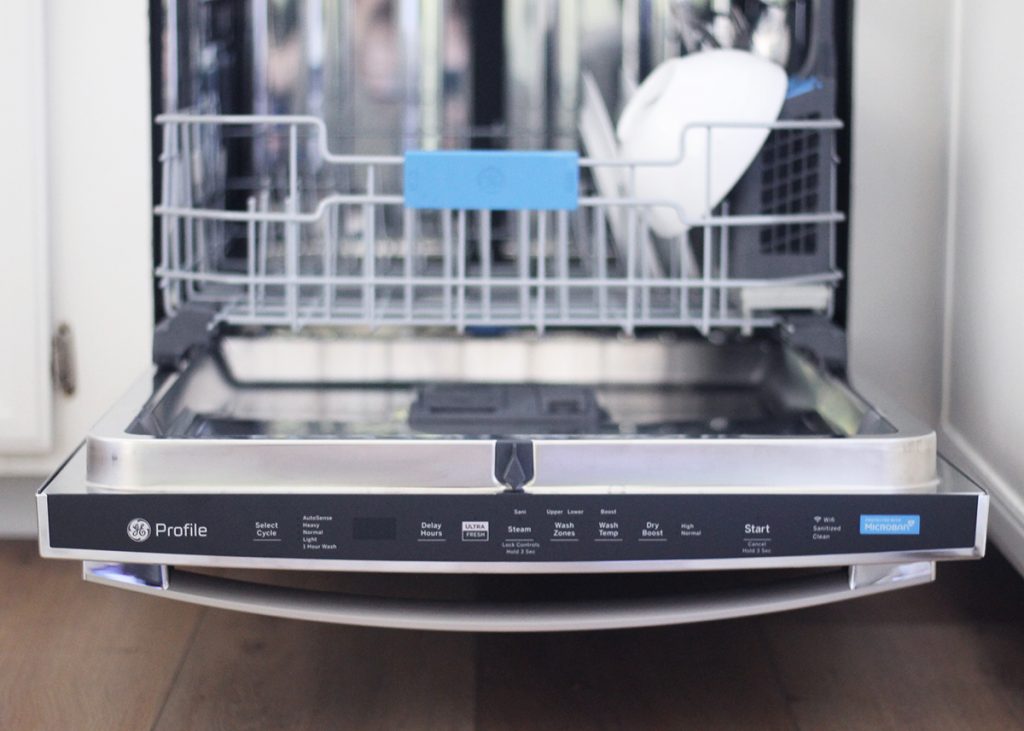
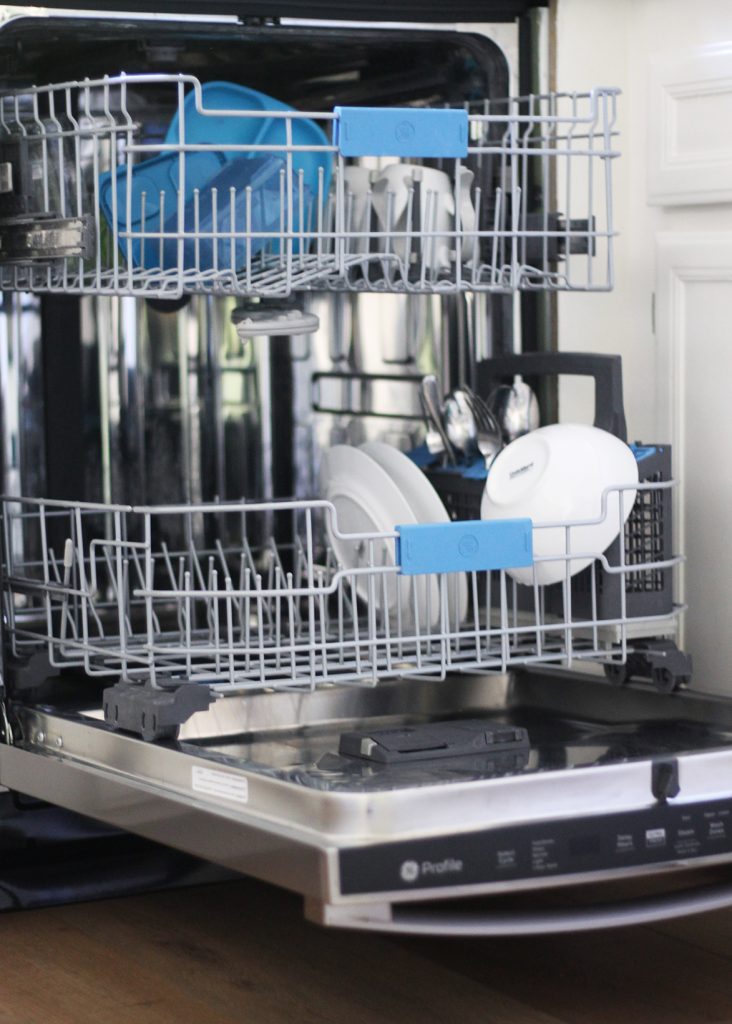

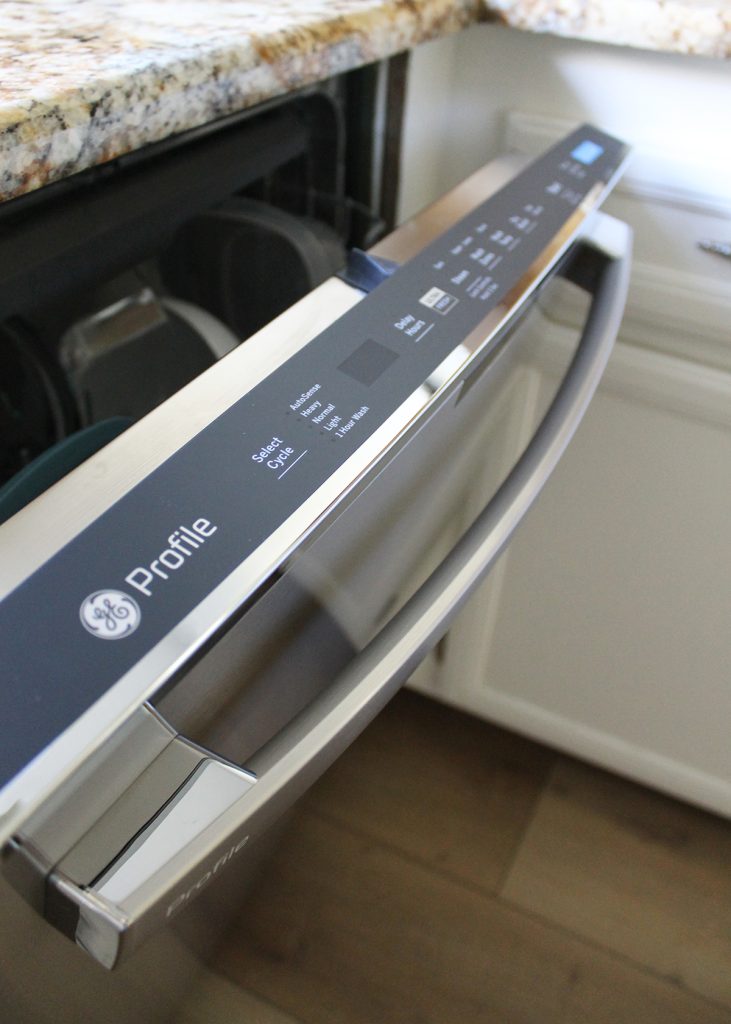


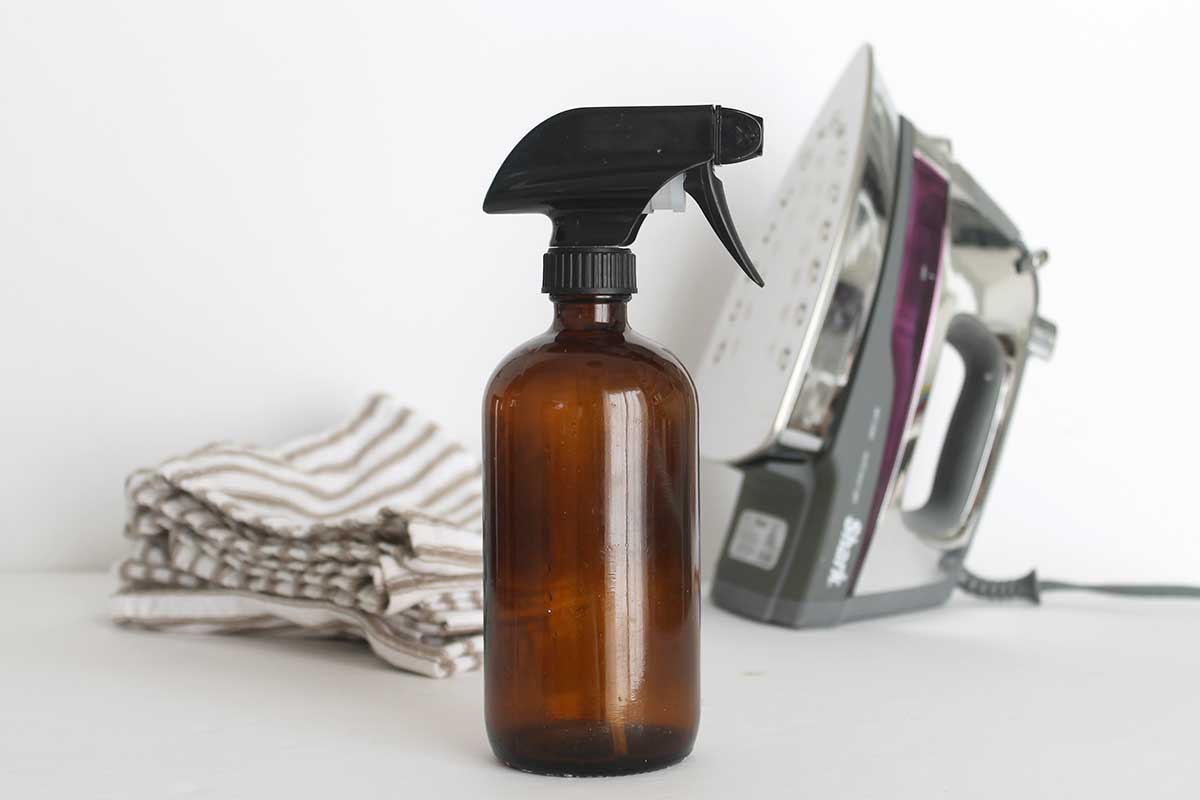


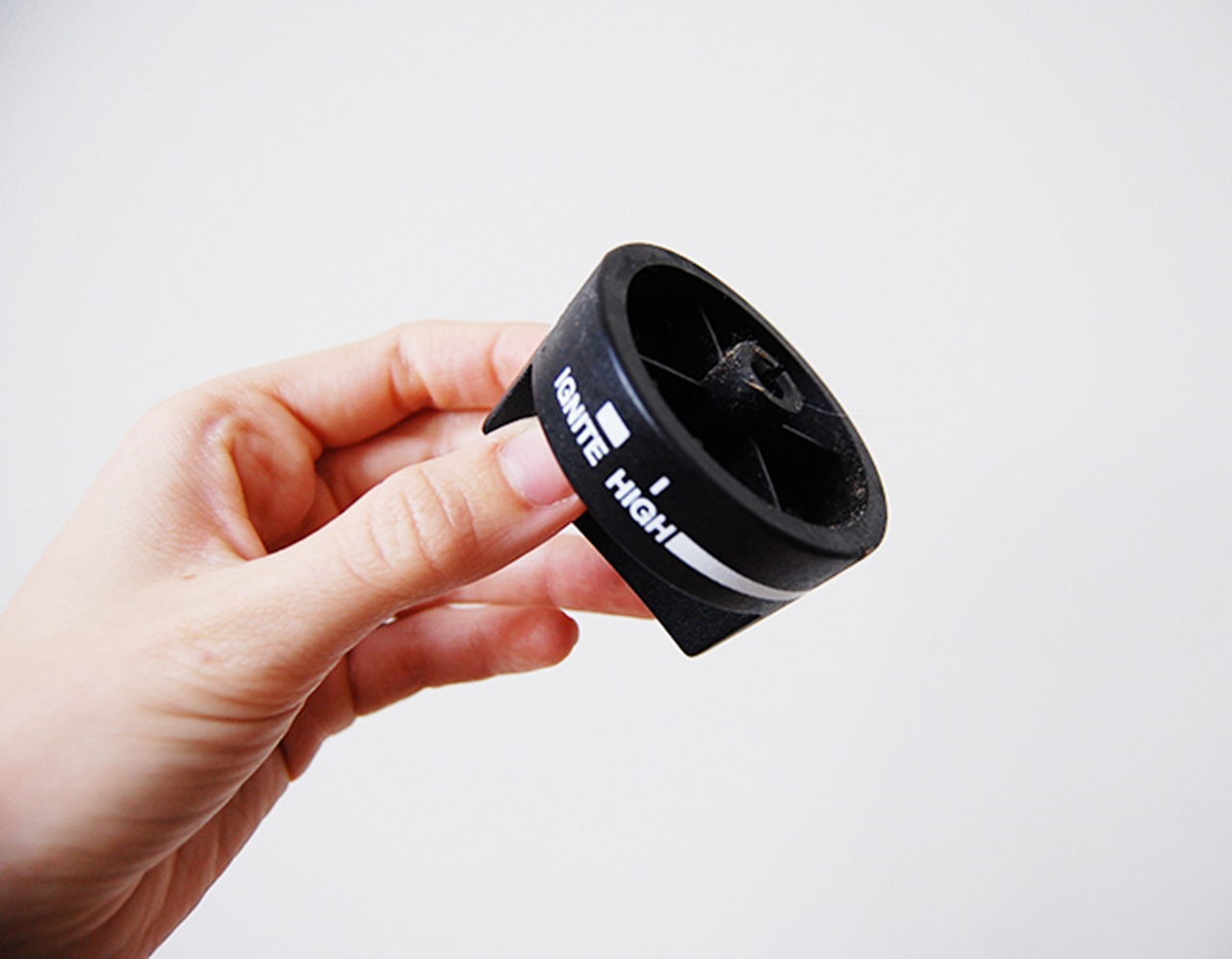
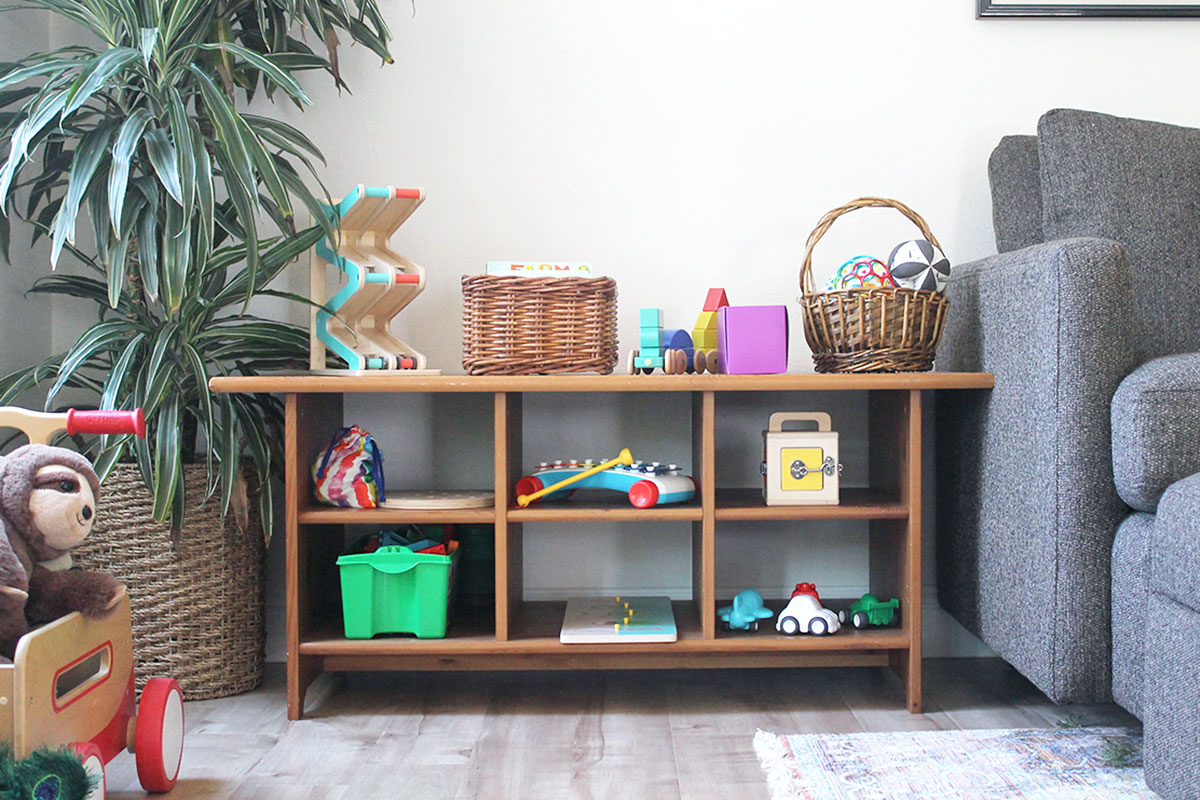
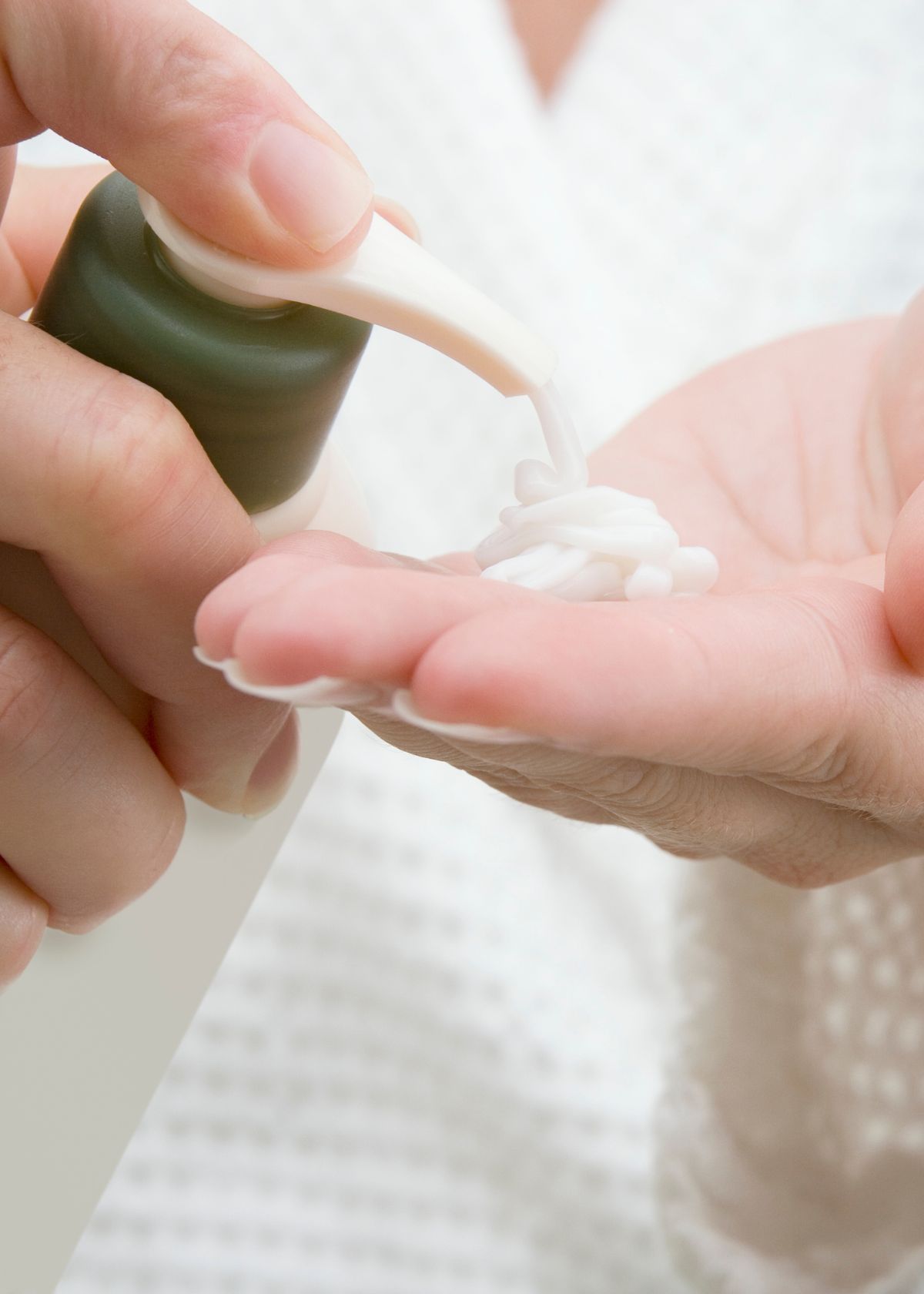
What size dishwasher is ideal for a large family?
I believe most dishwashers come in a standard size, but the layout/features of each dishwasher can vary quite a bit! Some families with larger kitchen floorpans invest in two dishwashers or one large standard dishwasher and a dishwasher drawer or two. Every home is different!